Throughout these activities, she worked on her procedural and explanation writing skills, learning to describe each step clearly in order and say what the final result was.
To guide her readers through the experiments, Keeva used time words like "first," "next," "then," "after that," and "finally." These words helped structure her writing, making it easier for others to follow the instructions step by step.
When Keeva spelled "reacted" as "reakt," she was demonstrating a key stage in her writing development known as phonetic spelling. This approach involves writing words based on their sounds, reflecting a child's growing understanding of the relationship between spoken and written language.
After receiving feedback on her writing, Keeva worked on making her instructions even clearer. She focused on using complete sentences and added more detail to each step.
Keeva's journey through these science experiments deepened her understanding of scientific concepts and also enhanced her ability to communicate those concepts effectively through her writing. By using time words, practicing spelling, and embracing feedback, she understood that we write for a purpose.
It is hard when I have to remember if I need to use a big letter or a little letter in my words. When I use words like ‘first’, ‘next’, ‘after’ at the beginning of a sentence it makes my writing easier for the reader. I have to sound out each word and write down the sounds that I hear. Sometimes I get them wrong and that's ok because I am learning and trying.
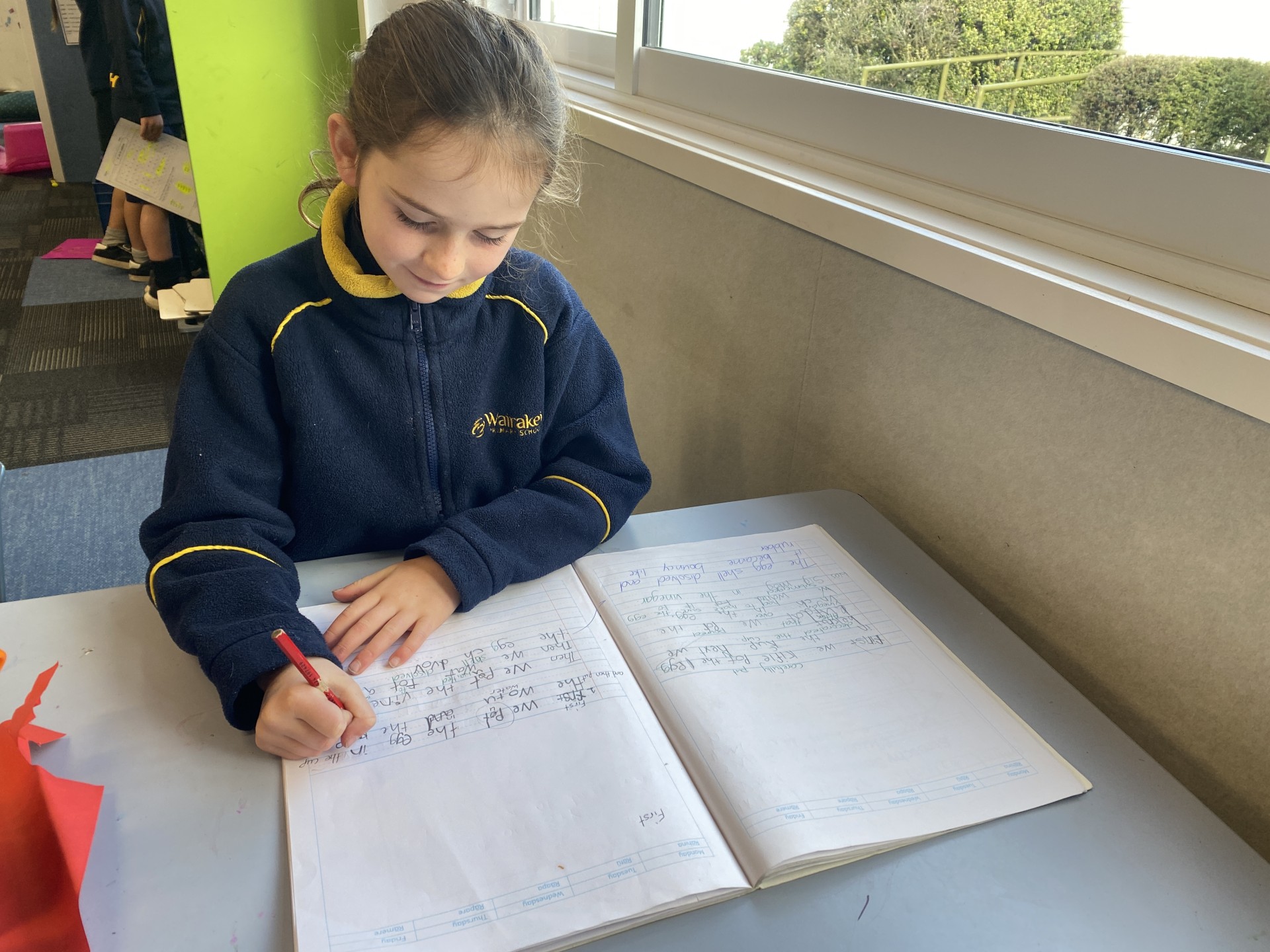

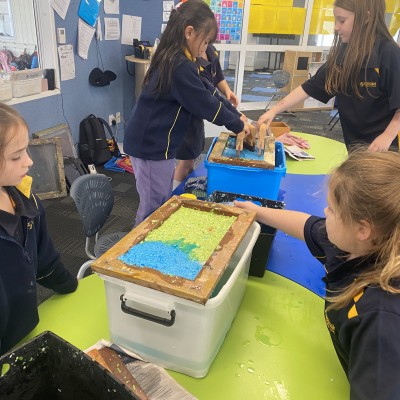
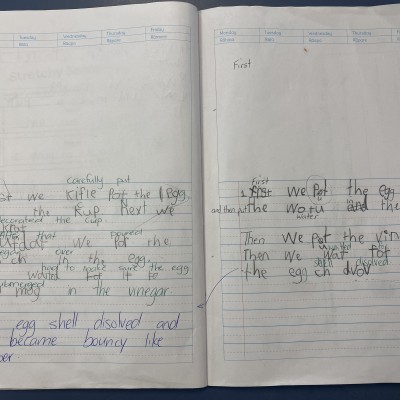

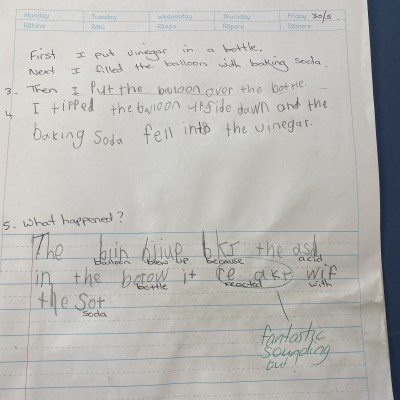
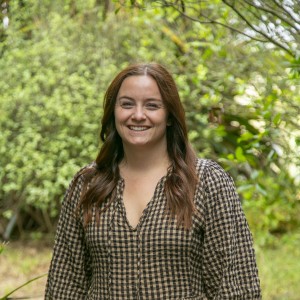

Comments
No one has commented on this post yet.